#NaturalFoodColors
Explore tagged Tumblr posts
Text
Natural Food Colors: A Healthier Alternative to Artificial Dyes
Food coloring has been used for centuries to enhance the visual appeal of foods. In ancient times, natural food colors were sourced from nature like turmeric, paprika, saffron, beetroot and other plant and insect sources. With advancements in chemistry in the 19th century, artificial colors were developed which could impart more intense hues compared to natural colors. This led to widespread use of artificial colors in foods, drinks and other products.
Get More Insights on Natural Food Colors https://www.patreon.com/posts/natural-food-to-129588520

0 notes
Text
#FoodColors#FoodColorants#NaturalFoodColors#FoodIndustry#CleanLabel#FoodInnovation#FoodIngredients#FoodTrends#MarketGrowth#FoodManufacturing#FoodAdditives#FoodTech#FoodAndBeverage#ColoringAgents#NaturalIngredients#FoodColorMarket#HealthyEating#ConsumerTrends#FoodVisuals#FoodColorForecast
0 notes
Text
Best Manufacturers of Synthetic & Natural Food Colors | Lake & FD&C Dyes Experts
The Ultimate Guide to Food Colors: Choosing the Right Synthetic and

Natural Dyes for Your Industry Food colors are more than just additives—they are essential in making food visually appealing, increasing consumer attraction, and enhancing brand recognition. Whether you are in the food, beverage, pharmaceutical, or cosmetics industry, choosing the right colors can significantly impact your product’s success. In this in-depth guide, we’ll explore everything about synthetic and natural food colors, lake colors, FD&C dyes, and the best manufacturers and suppliers of synthetic lake colors. If you’re looking for high-quality and FDA-compliant food colors, Standardcon is your go-to source!
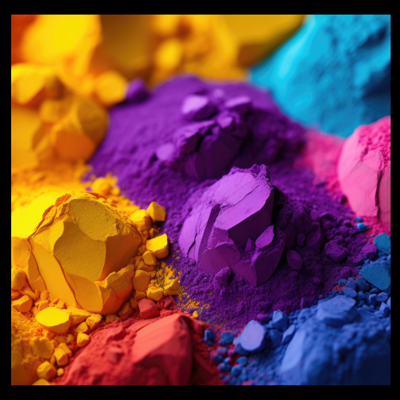
What Are Food Colors and Why Are They Important? Food colors are substances used to enhance or restore the natural color of food and beverages. In today’s competitive market, consumers associate color with taste, freshness, and quality. A well-colored product not only looks more appetizing but also helps build a strong brand identity. For food manufacturers, choosing a reliable supplier like manufacturers of synthetic food colors ensures color consistency, regulatory compliance, and product safety.
Types of Food Colors: Synthetic vs. Natural Food colors are categorized into synthetic and natural colors, each offering unique benefits. Synthetic Food Colors Synthetic colors are artificial dyes made in laboratories to provide high-intensity, stable, and consistent colors. They are widely used because they are cost-effective, highly soluble, and offer excellent color uniformity. Common synthetic food colors include:
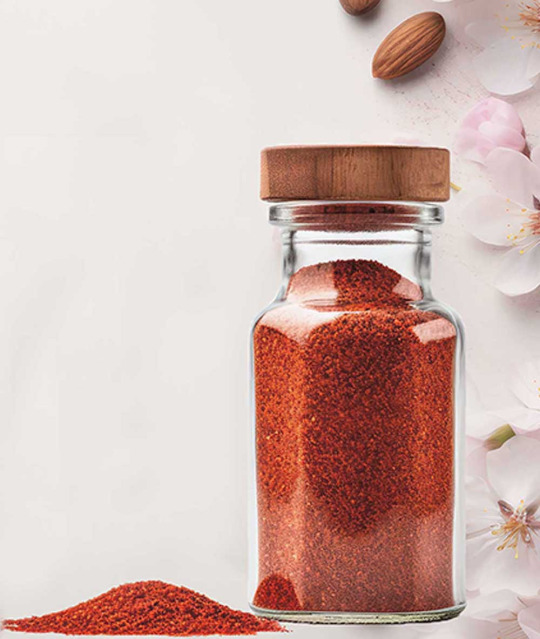
Brilliant Blue FCF (E133) – Used in beverages, candies, and dairy products.
Sunset Yellow (E110) – Found in ice creams, snacks, and bakery products.
Allura Red (E129) – Popular in soft drinks and syrups. Industries requiring synthetic and natural food colors can explore Standardcon’s wide range of high-quality dyes. Natural Food Colors Natural colors are extracted from plants, minerals, and other organic sources. They are preferred by brands focusing on clean-label and organic products. Examples include:
Curcumin (Turmeric Extract) – Bright yellow for dairy and spice blends.
Chlorophyll (Green Pigment) – Used in candies and pharmaceuticals.
Beetroot Red – A natural red used in juices and confectionery. To source the best natural colors, check out Standardcon’s natural food colors for premium-grade solutions.
Lake Colors: A Game-Changer for Food Manufacturing Lake colors are a special type of synthetic color that are insoluble in water but dispersible in oils and fats. They are highly stable and perfect for coated tablets, chocolates, dry mixes, and bakery toppings. Why Choose Lake Colors? ✅ Long-lasting & stable – Ideal for fat-based and dry applications. ✅ Versatile usage – Used in food, cosmetics, and pharmaceuticals. ✅ Brilliant & vibrant shades – Perfect for enhancing food appeal. For premium Lake Colours Manufacturers and Exporters, trust Standardcon’s world- class selection.
Understanding FD&C Food Dyes FD&C (Food, Drug & Cosmetic) colors are synthetic food dyes approved by the U.S. FDA. These certified dyes meet strict safety and quality standards for use in food, beverages, pharmaceuticals, and cosmetics. Common FD&C food dyes include:
FD&C Red No. 40 – Used in soft drinks, candies, and cereals.
FD&C Blue No. 1 – Found in sports drinks, ice creams, and snacks.
FD&C Yellow No. 5 – Used in processed foods and bakery items. If you need FDA-compliant synthetic dyes, check out Standardcon’s FD&C food colors for top-quality options.
The Best Synthetic Lake Colors Manufacturers, Exporters & Suppliers When choosing a food color supplier, it’s important to consider quality, safety, and consistency. The best Synthetic Lake Colors Manufacturers, Exporters & Suppliers provide high-performance food dyes suitable for various applications. Industries That Use Synthetic Food Colors: 🟢 Confectionery & Bakery – Candies, cakes, and frosting. 🔵 Beverages – Soft drinks, flavored water, and energy drinks. 🟢 Dairy Products – Ice creams, yogurts, and milkshakes. 🔴 Pharmaceuticals – Capsules, syrups, and coated tablets. 🟢 Cosmetics – Lipsticks, blush, and eyeshadows. For the best synthetic lake colors, visit Standardcon—a leader in food color manufacturing and supply.
How to Choose the Right Food Color for Your Product Picking the right food color depends on: ✔ Application Type – Will it be used in liquid, solid, or fat-based products? ✔ Regulatory Compliance – Ensure it meets FDA, EU, and FSSAI standards. ✔ Stability Requirements – Consider light, heat, and pH stability. ✔ Consumer Demand – More brands now prefer natural and clean-label colors. For expert guidance on food color selection, Standardcon offers custom solutions tailored to your industry needs.
The Future of Food Colors: Trends & Innovations 🚀 Growth in Natural Colors – More brands are switching to plant-based dyes. 🚀 Improved Color Stability – Advanced microencapsulation techniques enhance shelf life. 🚀 Sustainable Sourcing – Eco-friendly synthetic and natural color solutions are on the rise. 🚀 Custom Blends – Brands demand unique, signature shades for differentiation. Stay ahead of industry trends with Standardcon’s advanced food color solutions. Conclusion: Elevate Your Product with the Right Food Colors Choosing the right food color is essential for brand identity, consumer appeal, and product quality. Whether you need synthetic dyes, lake colors, or natural food pigments, Standardcon is your trusted partner for high-quality, safe, and certified food colors. 👉 Upgrade your food, beverage, or pharmaceutical products today! Explore Standardcon’s premium food color range and take your brand to the next level! 🚀
#SyntheticFoodColors#NaturalFoodColors#FoodDyes#LakeColors#FDCDyes#FoodColorManufacturers#FoodIndustry#FoodAdditives#FoodColoring#ColorSolutions#FoodProcessing#BeverageIndustry#PharmaceuticalColors#BakeryColors#ConfectioneryColors
1 note
·
View note
Text
Exploring Culinary Excellence with Vinayak's Tapioca Starch Solutions
Embark on a culinary adventure with Vinayak Corporation's premium tapioca starch solutions. As a distinguished player in the global food ingredient industry, we're committed to delivering innovative ingredients that redefine culinary excellence.
Our tapioca starch solutions are meticulously crafted to cater to a wide range of culinary applications, offering functionalities such as thickening, binding, and stabilizing. Whether you're creating delicate pastries, velvety sauces, creamy puddings, or indulgent desserts, our tapioca starches are your key to achieving the perfect texture and consistency every time.
As one of the leading tapioca starch manufacturers in India, with a significant presence in Mumbai, Vinayak is synonymous with quality and reliability. Our state-of-the-art manufacturing facilities and stringent quality control measures ensure that you receive only the finest tapioca starch products, consistently meeting your exacting standards.
In addition to our tapioca starch offerings, Vinayak specializes in a range of modified starch solutions, including our renowned modified potato starch powder, Elastovin. Designed to meet the demanding requirements of the food industry, Elastovin enhances elasticity, reduces rehydration time, and ensures superior stability in high-solid food applications, making it an indispensable asset for bakeries and confectioneries.
At Vinayak, we're dedicated to innovation and sustainability. Through ongoing research and development efforts, we strive to bring you cutting-edge solutions that not only meet your immediate needs but also contribute to a more sustainable future for the food industry.
Partner with Vinayak Corporation and elevate your culinary creations with our tapioca starch solutions. Let us help you unlock new realms of flavor and texture, and set your products apart in the competitive food market.
For more information visit - https://www.vinayakcorporation.com/food-additives/modified-starch-manufacturer/
For more information visit - https://www.vinayakcorporation.com/food-additives/natural-food-colours/
#FoodIngredients#FoodScience#IngredientInnovation#StarchSolutions#ModifiedStarch#NaturalFoodColors#CleanLabel#FoodTechnology#BakeryIngredients#ConfectioneryIngredients#FoodManufacturing#QualityControl#FoodIndustry#CulinaryInnovation#SustainableFood#HealthyIngredients#FoodTech#IngredientSupplier#FoodSafety#FlavorDevelopment
0 notes
Text

Let’s talk about what most brands miss.
They obsess over flavour. They obsess over packaging. But skip the one thing that hits first—visual impact.
That’s where Paprika Oleoresin wins. 50000cu. 60000cu. 80000cu. Not fancy buzzwords—just real control over consistency and strength. No surprises. Just results that look as good as they perform.
If your product looks dull… It doesn’t matter how great it tastes. People scroll past it, skip it, forget it.
This isn't hype. It’s how smart brands win without adding noise.
👉 Add clarity. 👉 Add contrast. 👉 Add colour that converts.
#aurogenesis#paprikaoleoresin#naturalfoodcolor#ingredientbranding#cleanlabelingredients#spiceextract#foodformulation#cosmeticpigments#naturalcolours#oleoresinbenefits#colourscience#ingredientinnovation#formulationtips#foodindustryinsight#beautyandflavour#naturalcolorblends#syntheticfoodcolor#foodcolor
2 notes
·
View notes
Text
Cochineal Extract Market Demand Rises with Shift Toward Natural Food Coloring Alternatives
The Cochineal Extract Market is experiencing a significant uptick in demand as food, beverage, and cosmetic manufacturers increasingly turn to natural coloring agents. This shift is largely influenced by growing consumer awareness regarding artificial additives, health-conscious purchasing decisions, and global regulations promoting clean-label ingredients. Cochineal extract, derived from the dried bodies of the cochineal insect, offers a vibrant red hue and has become a preferred choice in various industries seeking safer, more natural alternatives to synthetic dyes.
Clean-label Movement Driving Market Growth
The clean-label movement is more than a passing trend—it's a fundamental change in how consumers view what they eat and apply to their bodies. With more people reading labels and researching ingredients, there’s a heightened demand for transparency and natural content. This movement has led manufacturers to replace artificial colors like Red 40 and Allura Red with naturally sourced colorants such as cochineal extract.
Key drivers behind this transition include:
Consumer distrust of synthetic food dyes and their perceived health risks
Increased demand for organic and minimally processed products
Rising popularity of allergen-free and vegan-friendly formulations
Although cochineal extract is not vegan, many manufacturers still prefer it over chemical dyes due to its naturally derived origin and fewer reported health risks.
Application Diversity Across Industries
The versatility of cochineal extract is another factor fueling the growth of the Cochineal Extract Market. It’s used widely in:
Beverages such as fruit juices, carbonated drinks, and alcoholic products
Confectionery and dairy including ice creams, yogurts, and candies
Bakery items like frosting and pastries
Cosmetics for lipsticks, blushes, and nail polishes
This broad application range allows manufacturers to tap into a variety of market segments, further enhancing the extract’s commercial potential.
Other key applications include:
Pharmaceutical coatings for pills and tablets
Nutraceuticals and dietary supplements
Pet foods and treats where coloration is also a purchase influencer
These diverse applications ensure steady and resilient demand, regardless of fluctuations in any one sector.
Regulatory Backing Strengthens Market Adoption
Regulatory authorities in the U.S., Europe, and Asia-Pacific have acknowledged cochineal extract as a safe additive when used within approved limits. The extract is listed as E120 in the EU and has GRAS (Generally Recognized As Safe) status in the United States. Such approvals give manufacturers the confidence to integrate it into product formulations aimed at global markets.
Additionally, many regions are tightening restrictions on artificial food colors due to potential links with hyperactivity in children, allergic reactions, and carcinogenic effects. As a result, natural colorants like cochineal extract are being increasingly favored to comply with stricter food safety standards.
Challenges in the Cochineal Extract Market
Despite its many advantages, the market is not without its challenges. Several barriers to widespread adoption exist, particularly in sensitive consumer segments.
Key limitations include:
Non-vegan origin, which can be an issue for plant-based and cruelty-free product lines
Religious dietary restrictions, particularly among Kosher and Halal consumers
Allergy concerns, though rare, can limit its use in certain markets
To address these, some companies are investing in educational campaigns to clarify usage levels and safety, while others explore insect-free alternatives with similar color profiles.
Market Outlook and Regional Highlights
The future of the Cochineal Extract Market looks promising, especially in North America and Europe, where consumer preference for natural and organic ingredients is strongest. The Asia-Pacific region, while still dominated by synthetic colors in many areas, is rapidly catching up due to increasing disposable incomes and westernized food trends.
Latin America remains an important player in the supply chain, being the native habitat of the cochineal insect. Countries like Peru and Mexico are primary suppliers, supporting both global exports and domestic processing industries.
Key growth strategies observed include:
Expansion of production facilities near raw material sources
Collaborations between farmers and cosmetic/food brands
Increased R&D investments into extraction methods and stability improvement
Innovation in extraction technology is particularly crucial, as manufacturers seek to enhance color stability, shelf life, and temperature resistance—especially in heat-sensitive applications like baking and processed foods.
Sustainability and Ethical Sourcing: A New Focus
Sustainability is becoming central to how companies approach natural ingredient sourcing. Cochineal extract manufacturers are now under pressure to ensure ethical harvesting, minimal environmental impact, and fair trade practices.
Some producers are adopting more eco-conscious farming techniques, reducing water usage and pesticide reliance. Certification programs for ethical sourcing are also beginning to emerge, offering brands the chance to differentiate themselves in a highly competitive market.
Conclusion: A Natural Path Forward
With growing awareness about food safety and ingredient transparency, the Cochineal Extract Market is entering a phase of sustained growth. Its advantages as a natural, effective, and stable food coloring solution align with both regulatory expectations and consumer preferences. While some cultural and dietary limitations remain, strategic innovation and targeted product positioning are helping brands overcome these hurdles. As natural colorants become the industry norm, cochineal extract is set to secure its place as a key player in the global food and cosmetic additive landscape.
#cochinealextract#naturalcolors#cleanlabelmovement#foodinnovation#naturalfoodcoloring#beverageindustry#cosmeticsmarket#sustainableingredients#naturalalternatives#marketinsights#organicproducts#colorantsmarket#ingredientstrends
0 notes
Text
Food Colour Suppliers: Enabling Safe and Sustainable Food Innovation
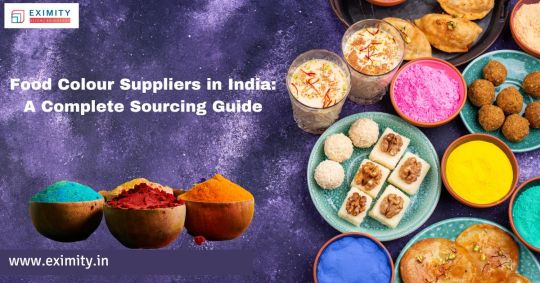
In today’s health-driven and environmentally conscious market, food manufacturers are rethinking their ingredient choices. This makes the role of trusted food colour suppliers more important than ever. From local brands to global exporters, selecting the right supplier ensures quality, compliance, and customer appeal.
Meeting Modern Consumer Expectations
Consumers are better informed and picky about what they eat. As a result, food companies are turning to suppliers that offer:
Natural food colour made from beetroot, turmeric, and spinach to meet clean-label demands.
Synthetic food colors that comply with food safety norms and provide consistent, bold hues.
Efficient and long-lasting food colour powder suitable for large-scale production across food categories.
Navigating Price and Purity
The demand for organic food colour is rising, especially in premium product segments.
Understanding food color powder price is essential for balancing budget and quality expectations.
Empowering Export Growth
For businesses involved in Jaggery Export From India, dried fruits, or snack manufacturing, food color plays a vital role in presentation. Globally appealing visuals can enhance shelf presence, and reliable food colour suppliers help maintain that edge across batches.
Why It Matters
Trusted suppliers offer transparency in sourcing, helping businesses meet global certification standards.
Whether you’re formulating sweets, drinks, or healthy snacks, your color choices influence buyer perception.
The handicraft industry in India has proven how quality and tradition can create global demand—Indian food manufacturers can do the same with the right visual branding. By partnering with experienced food colour suppliers, brands can ensure their products are not only visually attractive but also safe, clean, and ready for export.
0 notes
Text
🌶️ Red Hot and Natural! 🌶️
Tired of artificial food coloring? Discover the vibrant world of natural red food coloring substitutes! From beetroot powder to pomegranate juice, there are countless ways to add a pop of color to your dishes without compromising your health.
Want to learn more? Check out our latest blog post for tips and tricks on using natural red food coloring in your recipes.
How to Use Natural Red Food Colour Substitute in Your Recipes
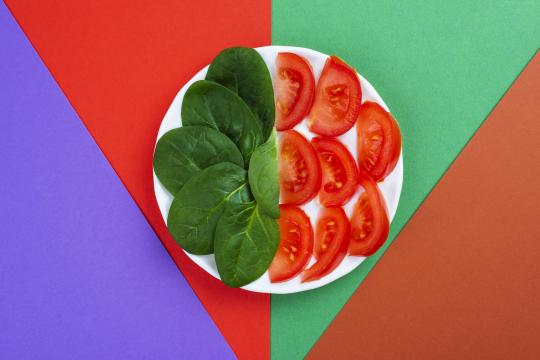
0 notes
Text
Chefmaster Food Color: Discover Benefits of Natural Dyes
Chefmaster Food Color offers natural alternatives for vibrant culinary creations. Explore the benefits of Chefmaster food color for more vibrant dishes! Read more: https://bakersmart.ae/blog/post/what-is-chefmaster-food-color-discover-the-benefits-of-using-natural-food-color
0 notes
Text
Red velvet cupcakes for Valentine's day
Valentine’s Day is in the air, and what better way to celebrate love than with a sweet treat made with your own two hands? This year, I’m ditching the store-bought chocolates and whipping up a batch of luscious red velvet cupcakes adorned with creamy frosting and juicy strawberries. It’s a dessert that’s not only delicious, but also packed with a heartfelt message for my family. Now, I’m no…

View On WordPress
#bakingwithkids#buttermilk#cocoapowder#cupcakes#easybaking#frosting#homemade#love#naturalfoodcoloring#redvelvetcake#Strawberries#valentine&039;s day
0 notes
Photo
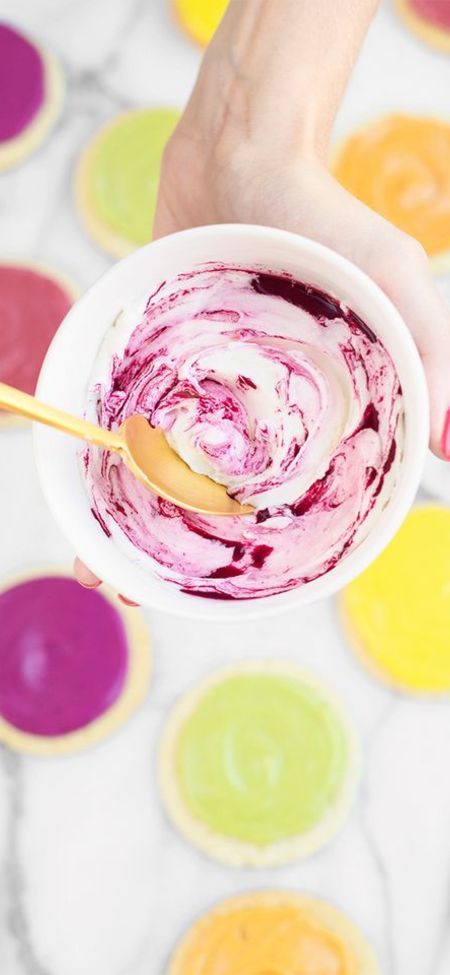
natural food coloring Transform your dishes into edible works of art with the magic of natural food coloring.
0 notes
Text

Sweet purple potato powder is made from fresh and high quality purple potatoes, after peeling and drying and other processing techniques, a purple powdery substance is obtained. Purple potato powder retains most of the nutrients in purple potatoes: protein, fat, carbohydrates, vitamins, minerals, and dietary fiber. After rehydrating purple potato powder, its color, aroma, taste, and texture are the same as that of fresh purple potato steamed and used in the same state, and it is faster.
Sweetpurplepotatopowder #naturalfoodcoloring #naturalcoloring #naturalfooddyes #foodscience
8 notes
·
View notes
Text
Unleashing Innovation with Vinayak's Modified Starch Solutions
Embark on a journey of culinary creativity with Vinayak Corporation's state-of-the-art modified starch solutions. As a leading global supplier, we're committed to revolutionizing the food industry with ingredients that offer unmatched performance and functionality.
Our modified starches are meticulously crafted to meet the diverse needs of food manufacturers, providing a wide array of functionalities like thickening, gelling, stabilizing, and texturizing. Whether you're crafting bakery delights, creamy dairy desserts, savory sauces, comforting soups, or convenient ready-to-eat meals, our starches are the key to achieving the perfect texture, mouthfeel, and shelf stability.
Being one of India's premier potato starch manufacturers, with a strong presence in Mumbai, Vinayak assures you of top-notch quality and reliability. Our signature modified potato starch powder, Elastovin, is designed to meet the exacting standards of the industry. With its ability to enhance elasticity, reduce rehydration time, and ensure stability in high-solid food applications, Elastovin is a game-changer for bakeries and confectioneries.
At Vinayak, we understand the critical importance of maintaining consistency and quality in food manufacturing. That's why each batch of our modified starch solutions undergoes rigorous testing and quality control measures, ensuring that your products meet the highest standards every time.
Join hands with Vinayak Corporation and unleash a new era of innovation in the food industry with our cutting-edge modified starch solutions. Let us help you create products that stand out in taste, texture, and quality, and take your brand to new heights of success.
For more information visit - https://www.vinayakcorporation.com/food-additives/modified-starch-manufacturer/
#FoodIngredients#FoodScience#IngredientInnovation#StarchSolutions#ModifiedStarch#NaturalFoodColors#CleanLabel#FoodTechnology
0 notes
Text
0 notes
Text
"Color Your Plate: Natural Food Colors Market Predictions 2024-2033"
Natural Food Colors Market : Natural food colors are the perfect way to add vibrant hues to your meals without any artificial additives. Sourced from plants, fruits, and vegetables, these colors not only make your dishes visually stunning but also keep your ingredients clean and healthy. Whether you’re baking, cooking, or making smoothies, natural colors like beet red, turmeric yellow, and spirulina blue will elevate your creations with a splash of nature’s beauty. Make the switch to natural food colors and bring more than just flavor to the table!
Download PDF Sample Report@https://www.globalinsightservices.com/request-sample/GIS25256/?utm_source=SnehaPatil-Article
Using natural food colors isn’t just about aesthetics — it’s about embracing a healthier lifestyle. Free from synthetic chemicals, they are rich in antioxidants and nutrients that are good for your body. From enhancing baked goods to livening up kids’ snacks, these colors are a great choice for anyone looking to keep things natural in the kitchen. Let your creativity shine with colors that are as wholesome as they are vibrant!
Relevant Link : https://linkewire.com/2024/10/04/natural-food-colors-market-projections-2024-2033-the-shift-toward-clean-label-ingredients/
#NaturalFoodColors #HealthyEating #CleanIngredients #VibrantDishes #PlantBasedColors #EatTheRainbow #HealthyLifestyle #FoodCreativity #NaturalBeauty #FoodArt #WholesomeIngredients #ColorfulCooking #HealthyBaking #CleanCooking #FoodInnovation
0 notes
Text
"Nature's Palette: Analyzing the Natural Food Colors Market 2024-2033"
Natural Food Colors Market is set to expand significantly from 2024 to 2033, driven by the growing consumer preference for clean-label and chemical-free food products. With increasing awareness of the health risks associated with artificial additives, manufacturers are switching to natural colorants derived from fruits, vegetables, and other plant sources. These natural food colors not only enhance the visual appeal of products but also offer added nutritional benefits, making them ideal for health-conscious consumers. The rise in demand for organic and minimally processed foods is further boosting the market, with food and beverage companies keen on meeting the evolving demands for transparency and sustainability in ingredients.
Download PDF Sample Report@https://www.globalinsightservices.com/request-sample/GIS25256/?utm_source=SnehaPatil-Article
Innovations in extraction techniques and improved stability of natural colors are helping to overcome challenges like heat sensitivity and limited color options. As consumers become more mindful of what they eat, the popularity of naturally sourced pigments, such as beetroot, turmeric, and spirulina, continues to grow across diverse applications like beverages, snacks, dairy, and confectionery. The market’s growth is also supported by regulations favoring the use of natural ingredients in food production, positioning natural food colors as a key trend in the food and beverage industry for the coming decade.
Relevant Link : Organic Follow Up Formula Market : https://www.globalinsightservices.com/reports/organic-follow-up-formula-market
#NaturalFoodColors #CleanLabel #PlantBasedColorants #OrganicFoodTrends #ChemicalFreeFood #HealthConsciousChoices #FoodTransparency #NaturalIngredients #SustainableFoodProduction #HealthyEating #FoodInnovation #OrganicFoodColors #BeetrootColor #TurmericPower #FoodAndBeverageTrends #NaturalPigments
0 notes